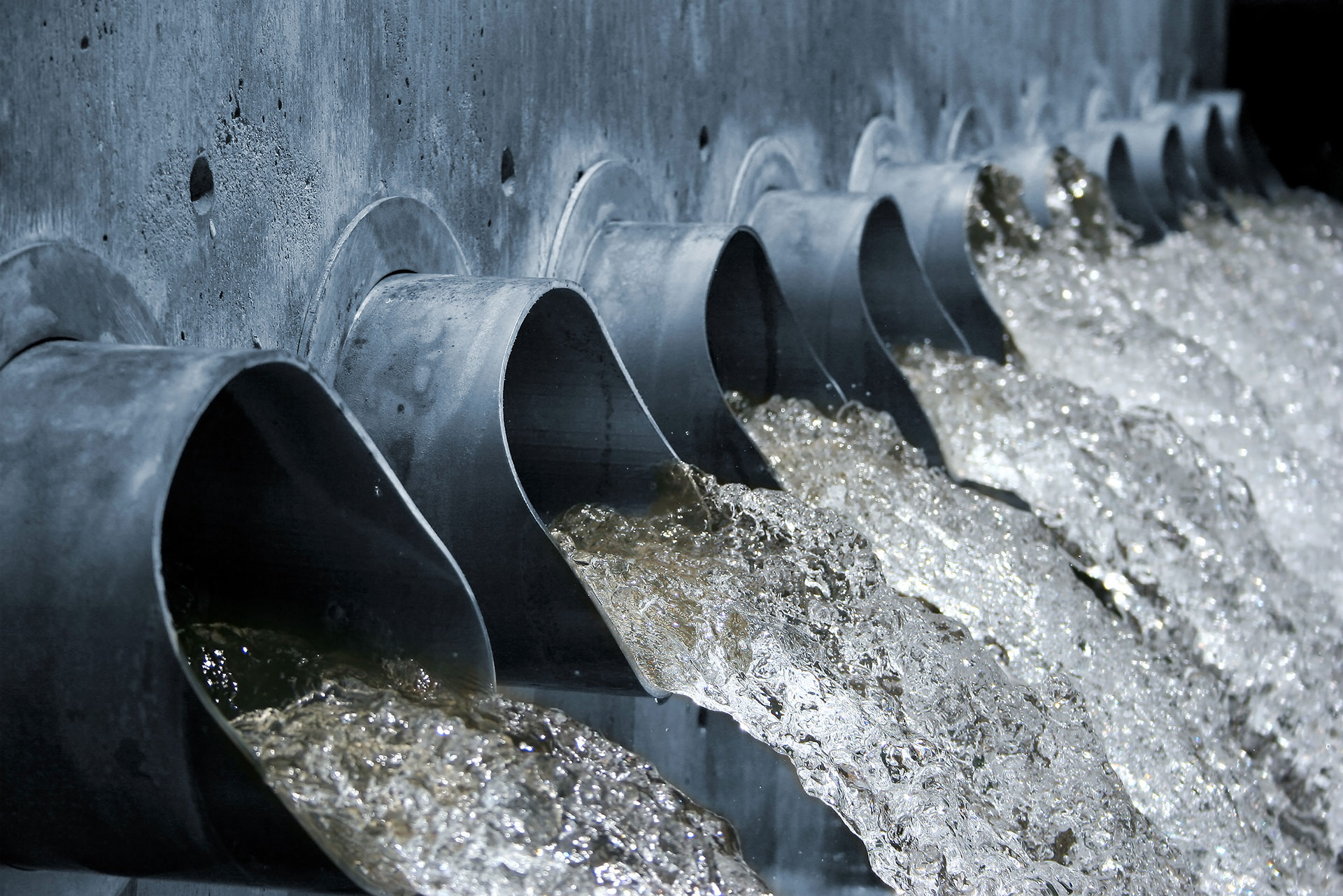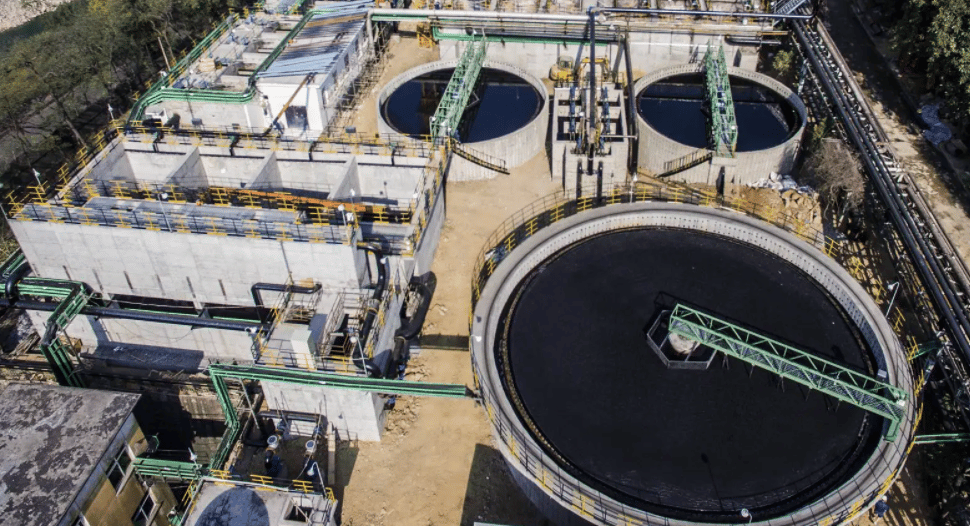Industrial Waste Water Treatment-- Cutting-Edge Technologies for Water Filtration
Wiki Article
Challenges and Solutions in Industrial Waste Water Therapy
The treatment of commercial wastewater presents a diverse variety of challenges, ranging from rigorous governing conformity to the intricacies of expense administration and technological restrictions. The irregularity in waste composition better makes complex the efficiency of typical treatment approaches, usually resulting in risen operational expenses.Regulatory Compliance Challenges
Exactly how can industrial centers navigate the complex landscape of regulative compliance in wastewater treatment? The regulatory structure governing wastewater administration is complex, frequently varying by jurisdiction and kind of sector.To efficiently take care of these compliance challenges, centers must implement durable monitoring and reporting systems that make sure real-time data collection and evaluation. Regular audits and threat assessments can determine possible conformity voids, permitting for aggressive adjustments in therapy procedures. Worker training programs concentrating on regulatory understanding and best methods are necessary to cultivate a culture of conformity within the company.
Additionally, engaging with regulative firms can offer beneficial understandings and clarify ambiguous guidelines. Facilities might additionally profit from seeking advice from ecological specialists that specialize in wastewater therapy compliance, making certain that they remain informed of progressing laws. By taking on these methods, industrial facilities can not just fulfill conformity requirements yet likewise improve their operational efficiency and ecological stewardship.
Price and Financial Barriers
Navigating governing conformity in wastewater treatment often presents significant monetary obstacles for commercial centers. The costs related to applying needed treatment innovations, keeping compliance with rigorous policies, and managing operational expenditures can be discouraging. Numerous companies face high first resources expenses for the construction or upgrading of wastewater therapy plants, which might stress budget plans, specifically for medium-sized and small business.Furthermore, ongoing functional costs, consisting of chemical, maintenance, and labor inputs, contribute to the economic problem. The unpredictability of rising and fall power prices and the possible need for added investments to meet evolving laws intensify these economic pressures. In numerous instances, the lack of monetary incentives or support from government bodies makes it much more challenging for companies to validate financial investments in advanced therapy systems.
In addition, the financial stability of wastewater treatment remedies is commonly examined, particularly for industries with tight profit margins. It is important for commercial facilities to explore cost-efficient approaches, such as taking on ingenious funding choices, engaging in collaborations, and leveraging arising modern technologies that can help reduce these financial obstacles while ensuring compliance with ecological standards.

Technological Limitations
Countless technical limitations impede the efficiency of industrial wastewater therapy processes. One significant obstacle is the inadequacy of existing treatment modern technologies to deal with complex pollutants.Additionally, the scalability of therapy technologies presents a challenge. While some innovative techniques, like membrane layer filtering or innovative oxidation, show pledge in controlled atmospheres, their execution on a larger scale can be technically difficult and much too expensive. Upkeep and functional complexities even more make complex the fostering of these systems, especially for smaller sectors with minimal technical proficiency.
The assimilation of real-time monitoring technologies likewise remains not enough in numerous therapy centers. Without effective tracking systems, operators can not adequately evaluate treatment effectiveness or identify potential failures, resulting in inconsistent effluent high quality. As a result, resolving these technological limitations through r & d, together with investment in ingenious services, is vital for improving the efficiency of commercial wastewater therapy and ensuring governing conformity. Industrial Waste Water Treatment.
Irregularity in Waste Make-up
In the realm of commercial wastewater therapy, the irregularity in waste composition presents an awesome obstacle. Industries produce wastewater with diverse characteristics, affected by aspects such as production processes, raw products, and functional practices. This diversification makes complex the treatment procedure, as traditional systems typically struggle to properly attend to the wide variety of toxins present.For instance, wastewater from food handling may you can check here have high levels of raw material, while effluents from chemical manufacturing can include heavy steels and hazardous materials. This variation demands adaptable therapy strategies to guarantee compliance with ecological regulations and shield public health. In addition, fluctuations in waste make-up can occur with time, influenced by modifications in production routines, upkeep activities, or the intro of brand-new products.

Cutting-edge Treatment Solutions
Cutting-edge treatment remedies are vital for addressing the complexities of commercial wastewater management. Typical methods commonly fall brief in effectively eliminating a vast array of contaminants, especially in centers with diverse effluent streams. Current developments concentrate on right here integrating advanced modern technologies to enhance treatment performance and sustainability.One promising strategy is making use of innovative oxidation procedures (AOPs), which leverage powerful oxidants to weaken natural pollutants. AOPs, including photocatalysis and ozonation, can considerably minimize poisonous substances and improve effluent high quality. Furthermore, membrane layer bioreactor (MBR) modern technology has acquired traction, combining organic therapy with membrane layer filtration, resulting in premium effluent and lowered impact.
An additional cutting-edge solution is the implementation of resource recovery systems. Techniques like anaerobic digestion not only deal with wastewater yet additionally generate biogas, which can be harnessed as a renewable resource resource. Furthermore, the fostering of artificial knowledge and equipment understanding versions can maximize therapy processes by anticipating variations in wastewater composition, thereby boosting functional effectiveness.
These innovative remedies not just address regulatory conformity yet likewise promote ecological sustainability, leading the way for an extra efficient and durable industrial ecosystem.
Verdict
In final thought, resolving the challenges of industrial wastewater find here treatment needs a complex strategy that integrates regulatory compliance, expense monitoring, and technical advancements. A commitment to continuous improvement in treatment methods will inevitably add to the reliable monitoring of commercial wastewater and ecological defense.The therapy of commercial wastewater presents a multifaceted array of challenges, ranging from stringent regulatory compliance to the ins and outs of expense administration and technical restrictions. Industrial Waste Water Treatment.Navigating regulative conformity in wastewater therapy commonly presents substantial financial obstacles for industrial centers. Resolving these technological limitations through research study and development, along with financial investment in cutting-edge remedies, is crucial for boosting the efficacy of commercial wastewater therapy and making certain regulatory conformity
Wastewater treatment facilities must spend in robust monitoring systems and adaptable therapy innovations capable of suiting differing influent qualities.In verdict, resolving the difficulties of industrial wastewater therapy requires a complex technique that integrates governing compliance, cost monitoring, and technological advancements.
Report this wiki page